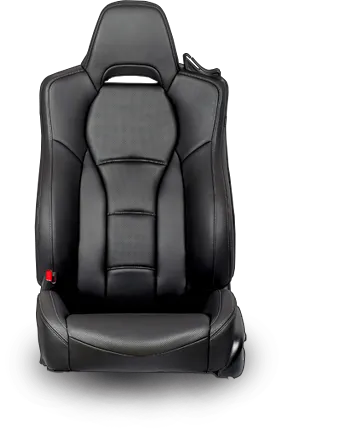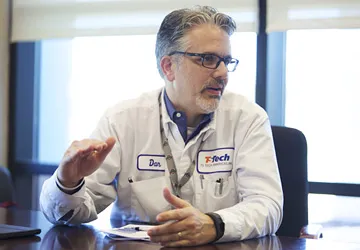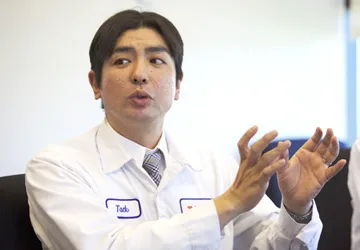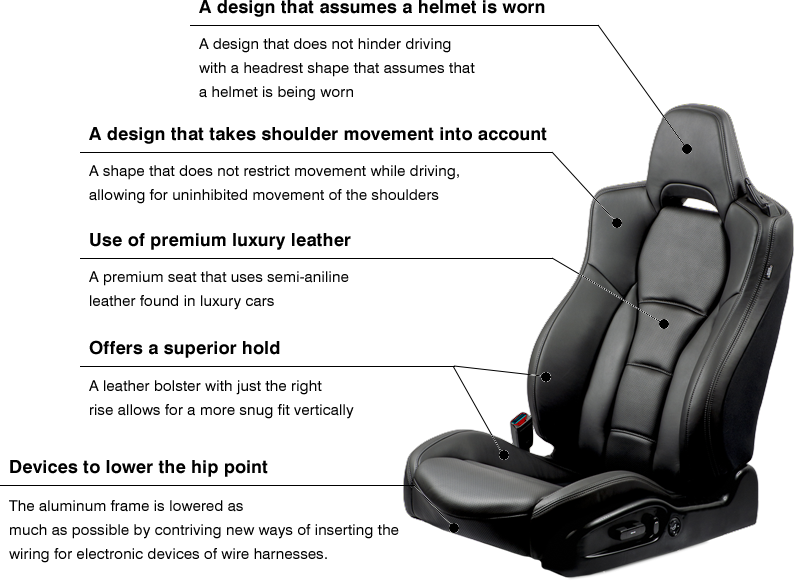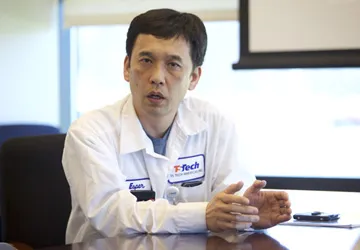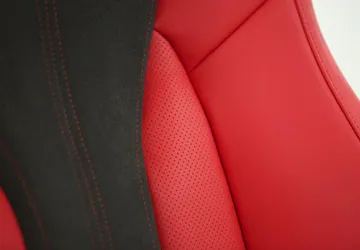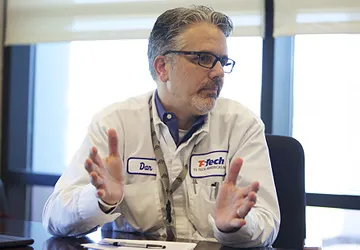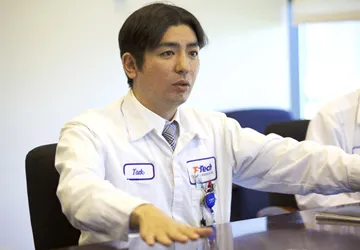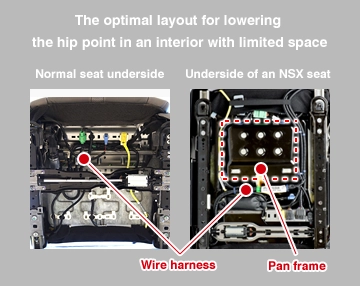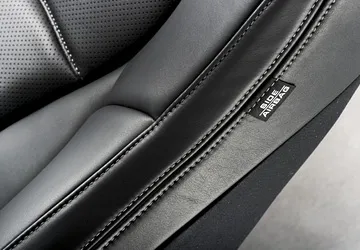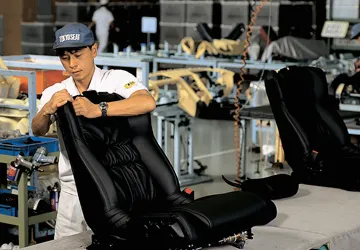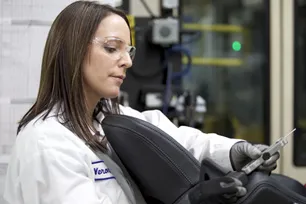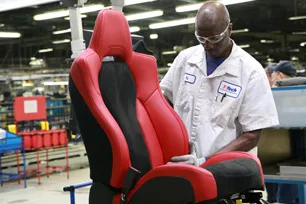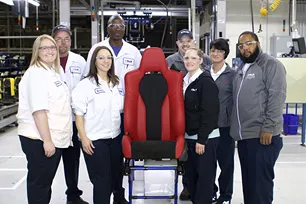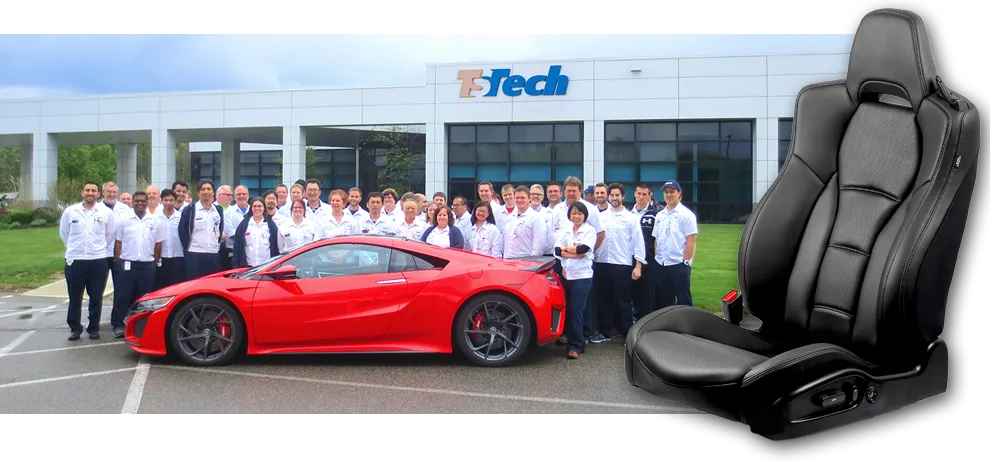Mar. 18, 2024
Introduction of new models
A Seat That Lives Up to the “Supercar” Label
Acura NSX
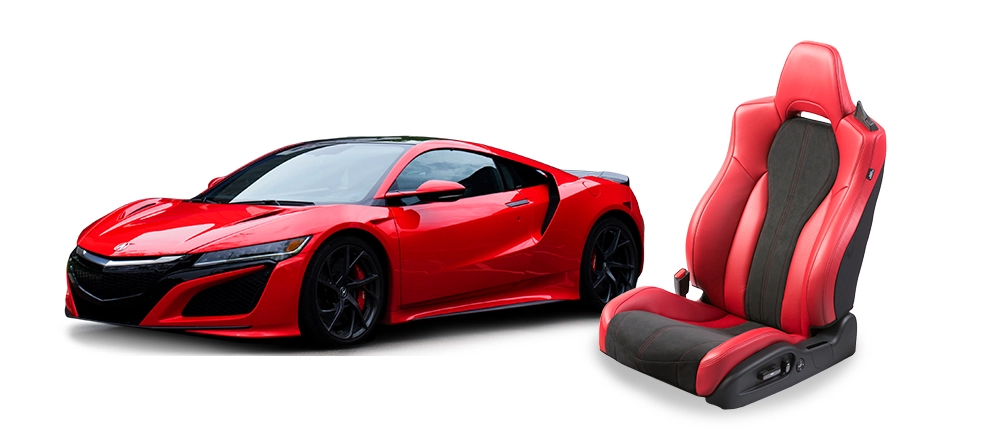
We interviewed some of the project team members about the development of the seats installed in the new NSX, which offers new driving pleasure through the integration of advanced technologies.
Profile
-

Dan Symanski
Large Project Leader (LPL) and Chief Engineer
Joined the regional headquarters in the Americas in 2007. Became involved in the development of new models by launching the product planning department with section managers from each section. Assigned as the LPL on this project.
-

Takayuki Inoue
Chief Engineer
Joined TS TECH Co., Ltd. in 2002. In charge of seat design in the design department. Has been stationed in the United States since 2012. In charge of the design area for the seat on this project.
-

Akira Ikezawa
Chief Engineer
Joined TS TECH Co., Ltd. in 2001. In charge of prototype engineering in the prototype engineering technology department. Has been stationed in the United States since 2012. In charge of the prototype engineering area for the seat on this project.
SymanskiThe NSX is the flagship (top-of-the-line) model of Honda's Acura brand, and I still remember that the first NSX had a major impact on the industry when it made its debut. I believe that it was an important model in car history.
When I was put in charge of the development of the seat for the project to revive the NSX after a 10-year absence, I felt a real sense of responsibility and thought, “I must develop a seat that will raise the status of the NSX even higher so as not to tarnish its name!”
Only the basic design of the frame was created in Japan, and the subsequent development was transferred entirely to the project team members in North America.
SymanskiThe development concept for the NSX proposed by the customer was a “human-centric design” as well as high performance and ease of handling for the driver, coupled with a greater comfort and safety.
To develop a seat based on this concept, since the NSX is a supercar model, we aimed to deliver both hold (the ability to hold a body in place) that can support a passenger even during higher levels of swing speed and advanced comfort.
Although we undertook research on a number of seats in supercar models of rival cars, which we set as our benchmark, we felt that while many of them showed an extremely good hold when they drove around a circuit, comfort was somewhat sacrificed.
Generally speaking, if the focus is only on the hold, comfort will suffer. It is not that difficult to satisfy either of these aspects individually, but it is very difficult to satisfy both hold and comfort at a high level. We have imbued the NSX seat with the technologies and expertise that we have cultivated, while also paying a great deal of attention to comfort.
InoueFor example, if we want to increase the hold, we just need to add a large bolster*1. However, it would get in the way during everyday driving, and comfort and the ability to get in and out easily would be lost. We therefore investigated the fine balance between these functionalities in various patterns by changing the surface shape of the seat and the softness of the urethane (cushion material) using simulation software. We then created a large number of prototypes and checked with in-house experts who evaluated overall comfort regarding the behavior during cornering that is unique to the NSX, the ability to get in and out of a sports car with a low height, and various sensations including driver fatigue after long periods of driving in order to finish the seat.
*1 Bolster: The portion that bulges out on the right and left sides of the seat face and the backrest section of the seat.
IkezawaWe paid particular attention to the bolster section. We layered urethane materials with different degrees of softness and achieved the hold best suited to sports driving, while simultaneously accounting for differences in driver physiques.
In addition, to give the car even more of a luxurious feel, we used wadding material*2 two or three times the thickness of the type normally used for the bolster. I believe that this enhances the high-quality unique to a luxury car through a seat that is soft to the touch from the moment the driver gets into the car.
However, we had a hard time achieving “sharpness,” one of our design concepts, because when we used thick materials, the seat looked bulky.
*2 Wadding material: Spongy material between the surface material and urethane
IkezawaBecause the NSX is a flagship sports car, customers feel strongly about its styling, and there was a demand that the seat have a complex surface shape with a simple structure.
Although there was a concave shape portion (see Figure 1) in our design, the surface material inevitably separated from the urethane when a trim cover*3 was placed on our prototypes, but if the surface material was stretched tightly to avoid this separation, it lost its shape.
For the portion that separated no matter what tests we conducted in terms of sewing, etc., we explored ways of reproducing the design without undermining our concept by using a process of selectively applying adhesion, which required great care.
Thanks to these efforts, we were able to successfully reproduce the concave shape, and I believe that we succeeded in creating a seat that met the wishes of the designers by achieving both performance and sharp styling.
*3 Trim cover: Fabric that is cut out and sewed according to the contours on the surface of the seat
IkezawaIn addition, it is difficult for an ordinary sewing machine to make a uniform line along the curve of the decorative stitching*4 on the Alcantara®*5 surface material at the center of the seat face because the area to be sewn is very long. We therefore installed pre-programmed automatic sewing machines to create stitches with a beautiful curve and a uniform width.
*4 Decorative stitching: Sewed section for decoration
*5 Alcantara®: Suede-like artificial leather with superior durability and ventilation
SymanskiWeight reduction is also an important challenge for sports cars. To contribute to weight reduction, we used a composite seat frame that utilizes the advantages of steel and aluminum for the seat frame, taking into account strength, processing and productivity.
If different metals are bonded, however, a difference in electrical potential*6 will arise in that portion and cause corrosion. Accordingly, we also adopted bonding technology for composite materials.
*6 Difference in electrical potential: Each metal has an electric property of a specific value, and the greater the difference in electric properties, the more easily corrosion will occur when different metals make contact.
InoueFor the section that supports the driver’s buttocks (hips), we used a frame structure that used a press-formed aluminum board, which enabled the weight to be reduced by almost 1kg when compared with steel.
We also received a request from the customer to maximize the space between the car height and the hip point*7 as much as possible. By using this structure, we were able to reduce the weight and lower the hip point as well.
The reason why it is difficult to lower the hip point is that if we set the frame that supports the driver’s buttocks low, the available area of the seat face will be limited, which will mean that there is nowhere to insert the wire harnesses (wiring) and other features. Because modern seats contain many electronic devices, such as side airbags and motors to adjust the position and angle of the seat, wire harnesses are spread out under the urethane to control them. Accordingly, the wiring, and even the interference when the seat moves, are carefully taken into account.
Thanks to this frame structure, the NSX ensures that the driver’s buttocks are as close to the floor as possible. We had a hard time designing the wiring of the wire harnesses, however.
Other than the wire harnesses, we also examined the thickness and softness of the urethane to make it as thin as possible without any loss of comfort. As a result, we have achieved a low hip point that is suitable for a supercar model as well as the comfort of a luxury car.
*7 Hip point: The position of the driver’s hips when he or she sits on the seat. Although a lower height and lower center of gravity are believed to be advantageous for sports driving, they limit the car's interior space. Accordingly, occupants will not fit if the seat does not have a low hip point.
SymanskiBecause the NSX is a high-end model, the value expected by customers is also very high, so we paid more attention than ever before to the external quality as well.
For the materials for the surface, for example, we used high-quality materials such as Milan leather and Alcantara®, even in the standard specification. We have also developed a high-grade specification that uses semi-aniline leather, a type of high-grade leather often found in European luxury cars.
I believe that because the surface coating*8 of the semi-aniline leather has a particularly thin finish, the driver will be able to feel the original texture and soft touch of the leather.
For normal leather, small scratches become invisible in the working process of surface coating. With semi-aniline leather, however, even minute scratches are noticeable because the coating is thin. We therefore select smooth, high-quality parts and conduct especially stringent inspections of the surface state.
*8 Surface coating: Generally, a solid coating is applied to the leather of automobile seats to make it resistant to direct sunlight and abrasion from clothing. If the coating is thick, the leather is stronger, but the original texture of the leather is lost.
IkezawaIn addition, the material is also softer than normal, so we make it with extreme care so as not to scratch it while sewing. Even when we transport trim cover to the assembly plant after sewing, we deliver it between plants using a shipping rack designed just for the NSX.
These stories of the surface material and sewing are just a few examples, and we make the seats in the hope of delivering the highest quality in line with the automobile rank of the NSX to customers, even if it takes us a lot of cost and effort.
InoueAlthough the seats for the previous NSX model were produced in a specialized plant in Japan, the seats for the new model are manufactured in the United States, as are the vehicles. It was also a challenge to produce high-quality seats at our existing plant in North America.
SymanskiProduction hurdles, such as leather that we had not previously dealt with and a complex surface shape, were high, but we designed a compact production line for a small number of people dedicated to NSX within the existing plant.
While we were able to significantly increase the assembly accuracy in the compact production line compared with the large one, the workload per person is heavier, and the level of difficulty of the assembly is also higher. We therefore formed an assembly team for the seats for the NSX by selecting highly skilled staff. A select team of specialists manufacture the seats with the utmost care. This method has enabled us to supply the highest quality seats that surpass those of the previous model.
After the project
Wonderful seats worthy of the NSX name have been created
SymanskiIt was very difficult to achieve the goal of delivering both comfort and hold. On top of that, there were many challenges such as weight reduction, exterior quality and costs, but I believe that a wonderful seat that lives up to the name of the NSX has been created thanks to the cooperation of all the project members and their exchanges of ideas. I think that when a supercar model such as the NSX is launched, media articles tend to focus on stories about the engine, style and driving performance, etc. However, several articles I found mentioned “high level of comfort” and “good driving position,” and I am very pleased with these comments because they appear to show that our development concept of a “human-centric design” has been realized. The seat has been well received by journalists, but I want even more users to experience the seat in the future.


